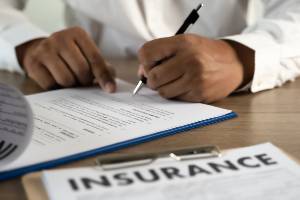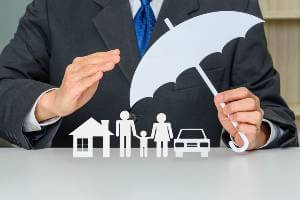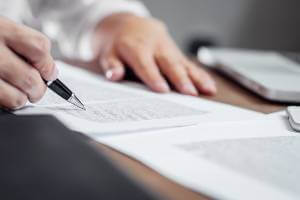Why it May be Difficult to Link Back Pain to a Car Crash
 Suffering an injury in a car crash is bad enough, but your insurance company telling you an injury is not that serious or that it preexisted the crash feels like an insult. Unfortunately, car insurance companies do this all the time, especially with back injuries.
Suffering an injury in a car crash is bad enough, but your insurance company telling you an injury is not that serious or that it preexisted the crash feels like an insult. Unfortunately, car insurance companies do this all the time, especially with back injuries.
It can be difficult to obtain hard evidence of some back injuries because they may not show up on imaging tests. That motivates insurance companies to deny there is an injury or undervalue it. These are two reasons why car crash claims for back pain can be challenging to validate.
One of the most important steps to take after a car crash is to contact an attorney to help you deal with the insurance company. An attorney can serve as a strong advocate for your case and manage all the steps involved.
At TSR Injury Law, there are no upfront fees for our services and our attorneys do not get paid unless our clients get paid. Call today to schedule a free consultation with a licensed Minneapolis auto accident attorney.
How a Car Crash Can Cause a Back Injury
Back injuries are common in car crashes because the body abruptly stops moving during the crash. Victims’ forward momentum is stopped by the seat belt, airbag, or even the steering wheel. This sudden stop can cause a sprain or fracture in numerous body parts, especially your back and neck.
Many crash victims with back injuries suffer damage to their lumbar spine in their lower backs. There are five vertebrae in this part of your spine. Even if vertebrae themselves do not suffer damage, the tissues around and discs between the vertebrae could suffer significant injuries.
Common Car Crash Back Injuries
Some of the most common car crash back injuries include:
Herniated Discs
If a spinal disc shifts it can compress nerves in the area, resulting in significant pain. Victims may feel a burning sensation and weakness from their back, into their buttocks and down their leg.
Vertebrae Fractures
There are various types of fractures that may occur:
- Compression fracture – These are small breaks in the vertebrae caused by pressure.
- Dislocation – There is a fracture and dislocation of the vertebra or vertebrae.
- Flexion fracture – This is when there are fractures in the middle or posterior columns.
- Burst fracture – This occurs when parts of the vertebrae get crushed, which may cause bone fragments to be scattered around.
Spondylolisthesis
This occurs when a vertebra is displaced by a stress fracture. The spine shifts forward or backward causing instability. The instability, or shifting, may cause compression of the spinal canal or nerves. Symptoms may include weakness, pain and leg numbness. Some victims may struggle with walking.
Sprains and Strains
These occur when soft tissues are stretched too far. A strain causes tendons in the back to get stretched. However, a sprain refers to damage to the ligaments that connect joints to bones and bones to bones.
Victims of car crashes that result in back injuries may also develop degenerative spinal disorders:
- Spinal stenosis
- Bulging discs
- Degenerative scoliosis
- Bone spurs
- Spinal osteoarthritis
- Pinched nerves
- Foraminal stenosis
Challenges of Validating Back Pain Claims
Claims involving back pain and back injuries are challenging for a number of reasons, some have to do with how victims deal with their injuries, others have to do with how insurance companies view these injuries.
Victims Often Wait to Seek Treatment
This happens with many types of car crash injuries, but especially soft-tissue injuries. They may feel a little pain after the crash but assume it will go away on its own. Maybe they have felt similar pain before and think it will stop in a few days or a week or so. They compare it to being sore after a hard workout.
While some pain does go away on its own, often, the pain will get worse. Victims may wait until that happens to seek treatment.
There are two problems with this: injuries can and do get worse when they are left untreated, and it can be harder to link the injury to the crash. A commonsense argument is the longer away treatment occurs from the crash, the less likely the treatment is related to the crash.
Whenever there is a significant gap between the crash and the first meeting with a doctor, insurance companies claim the injury did not happen in the crash. They claim the victim suffered an injury because of something else that happened between the time of the crash and the date of treatment. This is known as an intervening cause. They may even say you are in pain because of a preexisting medical problem that became aggravated.
It is important to not delay medical treatment after a car crash. It is possible your injury is not that bad, but this determination needs to be left up to a qualified medical professional. Getting to the hospital or a doctor’s office quickly helps you get pain relief and establish a strong link between the crash and any injuries diagnosed by doctors. Soreness, although mild, could be a symptom of a more serious injury.
It is important to note that even if you delay treatment, an attorney may still be able to help you obtain compensation. That is why it is vital to call a lawyer right away.
It May be Difficult to Validate a Back Injury
Some back injuries may not show up on a medical imaging test, particularly injuries to soft tissues like muscles. Some injuries may not even show up on an MRI or X-ray. Technology will not always show a disc bulge or green tree fracture.
Even if an imaging test shows the injury, the severity of the injury may be at least partially based on the symptoms reported by the victim. This is a subjective measurement, and the insurance company is likely to be highly critical of how the victim describes his or her injury.
When a doctor diagnoses a soft-tissue injury, he or she is going to rely on the patient’s description of symptoms and pain levels. Even though the doctor is going to do a physical exam to determine range of motion and other benchmarks (ability to stand up straight, walk or bend at the waist), he or she is going to rely heavily on the victim’s feedback.
Insurers Consider Soft-Tissue Injuries to be Minor
Car insurance companies have biases against soft-tissue injuries. They are likely to consider these to be less serious than broken bone injuries or brain injuries.
Despite the insurance company’s bias, many crash victims who hire experienced attorneys can secure the compensation they need for their back injuries. While contacting an attorney is an important step, it is also important for victims to be diligent in their medical treatment. That means not skipping appointments without a good reason and rescheduling missed appointments.
If you stop getting treatment, the insurance company is going to say you are healed or you no longer need treatment. They will use that as a reason to devalue your claim.
If you disagree with the doctor’s treatment plan, you may want a second opinion. However, it is important to keep your lawyer informed about what is happening with your treatment.
Need Help with a Claim for Back Pain? Call TSR Today
Validating a car crash claim for back pain is often complicated, and without an attorney’s help, it is very unlikely you will be able to recover full compensation for your damages.
At TSR Injury Law, we are committed to securing maximum compensation for medical expenses, lost wages and non-economic damages. We have obtained $1 billion on behalf of our clients.
There are no upfront fees for our services and no fees while we work on your case.
Free consultation. No obligation. Call today: (612) TSR-TIME.


 You are probably not surprised to learn car insurance companies like to insert a variety of provisions or clauses into their insurance contracts to try to protect their interests.
You are probably not surprised to learn car insurance companies like to insert a variety of provisions or clauses into their insurance contracts to try to protect their interests. Did you know umbrella insurance could be used to pay for damages you suffered in a car crash?
Did you know umbrella insurance could be used to pay for damages you suffered in a car crash? In 2021, 497 lost their lives in traffic crashes in Minnesota, which is a 14-year high for traffic deaths in the state.
In 2021, 497 lost their lives in traffic crashes in Minnesota, which is a 14-year high for traffic deaths in the state. There are many steps involved in pursuing compensation for an injury caused by another’s negligence. One of the final steps is often signing a settlement release with the at-fault party’s insurance company (or the victim’s own carrier for uninsured or underinsured settlements.)
There are many steps involved in pursuing compensation for an injury caused by another’s negligence. One of the final steps is often signing a settlement release with the at-fault party’s insurance company (or the victim’s own carrier for uninsured or underinsured settlements.)